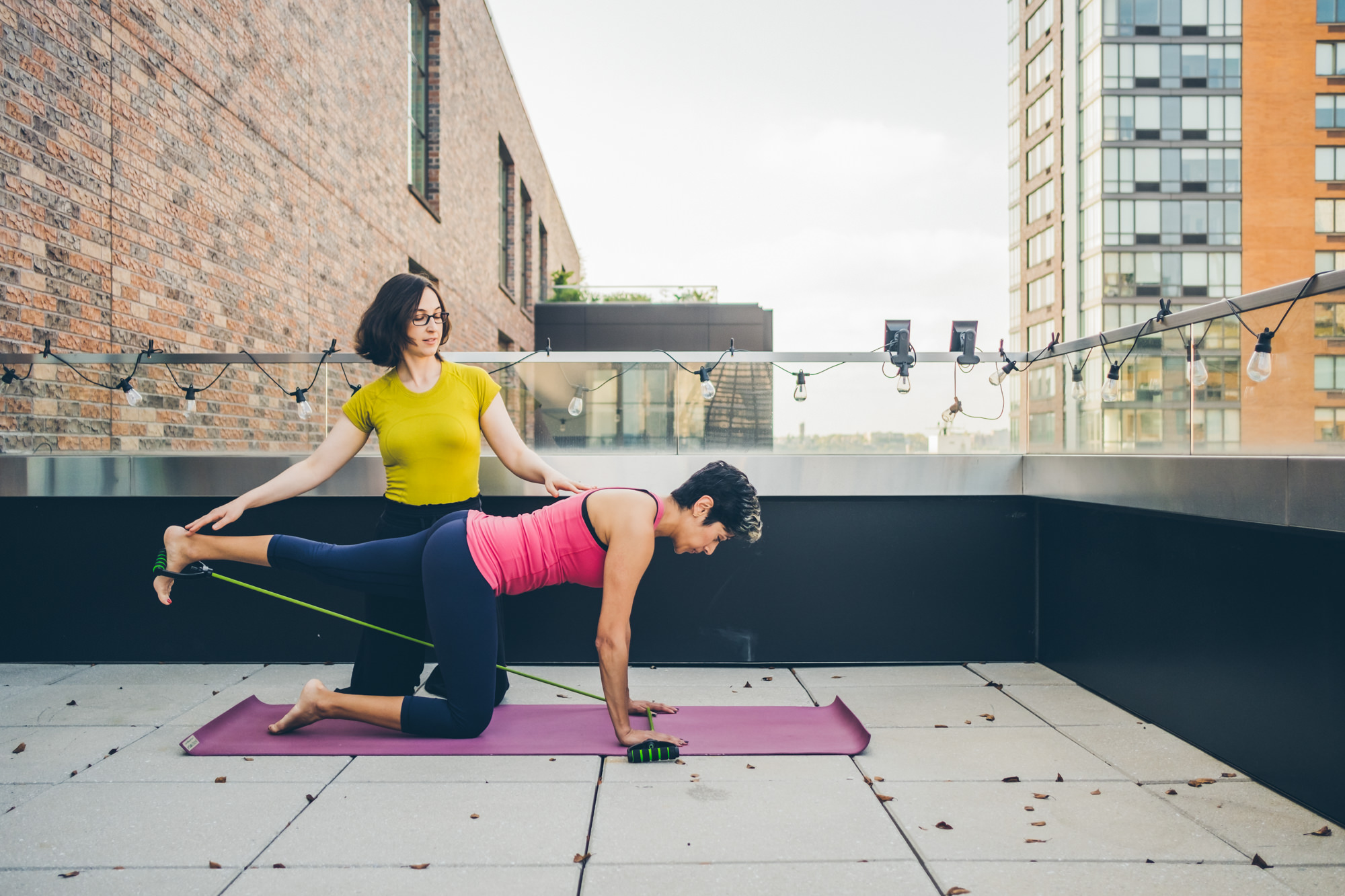I’ve been cleared for exercise, now what?
Once you have been cleared to exercise after your postpartum check up it can be overwhelming to know how to begin exercising safely again. Remember that your body has just gone through 9 months of pregnancy, plus labor and delivery, or a c-section. Not to mention the current sleep deprivation. And if you are breastfeeding, your body has lots of pregnancy hormones still coursing through your it. You will need to start your postpartum workout slowly and gently and expect your fitness levels to be lower than at the end of your pregnancy. Please listen to your body as you approach the following sequence. This whole postnatal workout can be done slowly, with smaller ranges of motion than depicted in the images, and even just a few reps will build strength.
What’s different about a postnatal workout sequence?
During pregnancy and delivery, whether vaginal or cesarean, the pelvic floor and abdominal muscles take a big toll. The goal of this postnatal workout sequence is to help rebuild strength throughout the whole body, while focusing on stability, breathing, and support through the pelvis and abs.
What should I watch out for when beginning to exercise postpartum?
If you feel any straining in your abdominals, pelvic floor, or lower back try reducing the intensity or range of the movement. Focus on exhaling while doing the hardest part of the movement.
Begin your postpartum workout:
Start with 10 reps or 10 second holds and build up to doing all the exercises 30 times, or holding for one minute.






As you exhale, pull your belly to your spine and round your back. As you inhale arch your back and look up to the ceiling.





Rotator cuff: Holding a band in both hands, open the band out to the sides while keeping your elbows close to your body.
Sideways band walks: With a band around your ankles, walk sideways.
BONUS: Put these two exercises together once you are comfortable with them







I’d like some guidance from a postnatal trainer
Reach out to Morgana Tessler for a complimentary consultation to discuss any particular issues you may be experiencing postpartum such as diastasis recti, pelvic floor prolapse, lower back pain, or just confusion about how to begin exercising postpartum.
What if i haven’t been cleared for exercise yet?
While you should wait to begin this postnatal workout series until after you have been cleared for exercise, there are safe ways to help your body heal after having a baby.
How can I heal faster from a c-section?
If you had a c-section, you can begin this postpartum workout once you have been cleared for exercise by your ob. Additionally, you can begin loosening up the scar tissue to help your abdominals and pelvic floor heal faster. Here is a great video that shows all the steps.
What if I have diastasis recti?
If you have diastasis recti, you can still do this postpartum workout except for the section on the hands and knees. Learn more about healing your diastasis recti.








